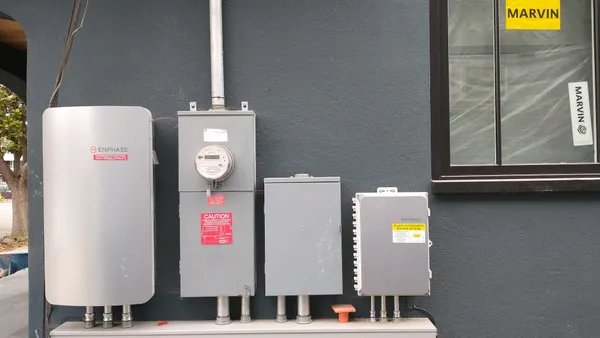Dive Brief:
- The United States Court of Appeals for the District of Columbia this week upheld new capacity performance rules set by PJM Interconnection, which require resources bidding in its forward capacity market to be available year-round.
- The new rules were challenged by a diverse group of stakeholders, including renewable energy advocates who say wind, solar and demand response are all challenged under that requirement.
- PJM officials say they were pleased by the decision, but recognize there is still significant debate surrounding the new rules.
Dive Insight:
Results of PJM's most recent forward capacity auction—the first to fully implement the new rules—were released last month, with surprising results. Capacity payments were broadly lower than expected, despite the new rules in place adding hefty requirements on any resources.
The new rules, which require year-round availability, had been expected to push prices higher. Instead, cheap gas and flat demand sent values lower.
PJM rushed to put enhanced capacity rules in place after the Polar Vortex of 2014, when many plants were forced offline by cold weather. But groups sued, saying the new rules could push out renewables and demand response—which played a role in keeping the lights on during that harsh winter.
On Tuesday, the U.S. Court of Appeals for the District of Columbia upheld the Federal Energy Regulatory Commission’s approval of PJM’s new capacity performance rules.
“We recognize there was a fair amount of debate on the issue, and we are pleased with the Court’s thorough and thoughtful review,” Craig Glazer, vice president of Federal Government Policy for PJM, said in a statement. “The ruling affirms the just and reasonableness of the market rules, which support PJM’s mission of maintaining a fair and competitive market and a reliable grid.”
Complaints were filed by a diverse group, including Sierra Club, the Union of Concerned Scientists, the Advanced Energy Management Alliance, American Public Power Association and National Rural Electric Cooperative Association.
The new capacity performance rules did seem to have an impact on demand response resources. Both bids and cleared volumes declined with the new capacity rules fully in place. Just 9,846.7 MW of demand response was offered, declining nearly 17% from last year. And of that, 7,820 MW of resources cleared the auction, compared with 10,348 MW last year.















